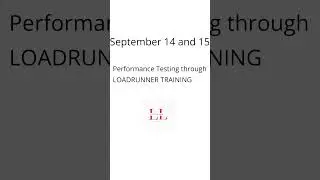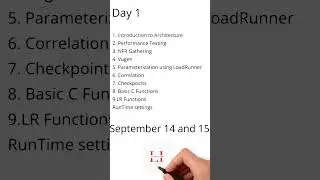How to integrate Github with Neoload
*Title: Integrating NeoLoad with GitHub for Seamless Performance Testing: A Step-by-Step Guide*
*Introduction:*
In today's fast-paced software development landscape, continuous integration and delivery (CI/CD) are paramount for delivering high-quality applications. Performance testing plays a crucial role in ensuring that your applications can handle real-world usage scenarios without any hiccups. Integrating NeoLoad, a leading performance testing tool, with GitHub, a popular version control and collaboration platform, can streamline the testing process and enhance overall software quality.
*Why Integrate NeoLoad with GitHub?*
Integrating NeoLoad with GitHub offers numerous benefits that contribute to efficient and effective performance testing:
1. *Seamless Collaboration:* With GitHub's collaborative features, teams can work together on performance tests, share scripts, and monitor test results collectively, fostering collaboration and knowledge sharing.
2. *Automated Testing:* Integration enables automatic execution of performance tests whenever there are changes in the codebase, ensuring that potential performance bottlenecks are identified early in the development cycle.
3. *Early Issue Detection:* By running performance tests as part of your CI/CD pipeline, you can identify performance issues in real-time, allowing for prompt resolution before they impact end-users.
4. *Data-Driven Insights:* Integrating NeoLoad with GitHub allows you to analyze historical test results and trends, helping you make informed decisions based on performance data.
*How to Integrate NeoLoad with GitHub: A Step-by-Step Guide*
*Step 1: Set Up GitHub Repository:*
1. Create a GitHub repository for your project if you don't have one already.
2. Clone the repository to your local machine using Git.
*Step 2: Configure Your CI/CD Pipeline:*
1. Choose your preferred CI/CD platform (e.g., Jenkins, Travis CI, CircleCI).
2. Set up your CI/CD pipeline to include the NeoLoad performance tests.
*Step 3: Install NeoLoad CLI:*
1. Download and install the NeoLoad Command Line Interface (CLI) tool on your local machine.
2. Configure the CLI with your NeoLoad Web API credentials.
*Step 4: Create NeoLoad Test Scripts:*
1. Develop performance test scripts in NeoLoad, simulating user actions and load scenarios.
2. Export these scripts in a format supported by the NeoLoad CLI (e.g., YAML).
*Step 5: Integrate NeoLoad in CI/CD Pipeline:*
1. Add a step in your CI/CD pipeline configuration to run NeoLoad tests using the CLI.
2. Provide the necessary command-line arguments to specify the NeoLoad test scripts, environment, and other parameters.
*Step 6: Monitor and Analyze Results:*
1. Once the tests are executed, the results will be available in NeoLoad's dashboard.
2. Use NeoLoad's reporting and analysis features to identify performance bottlenecks and trends.
*Step 7: Incorporate Feedback:*
1. Based on the test results, collaborate with your development team to address performance issues.
2. Make necessary code optimizations to improve application performance.
*Conclusion:*
Integrating NeoLoad with GitHub empowers software development teams to incorporate performance testing seamlessly into their CI/CD pipelines. This integration enhances collaboration, automates testing, and ensures early detection of performance issues. By following the step-by-step guide, you can harness the power of NeoLoad and GitHub to deliver high-performing applications that meet user expectations.
*Hashtags for YouTube Description:*
#PerformanceTesting #NeoLoad #GitHubIntegration #CI/CD #SoftwareQuality #DevOps #Automation #ContinuousIntegration #PerformanceOptimization #Collaboration #SoftwareTesting































